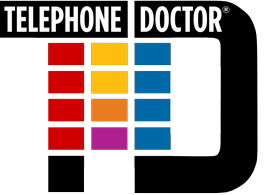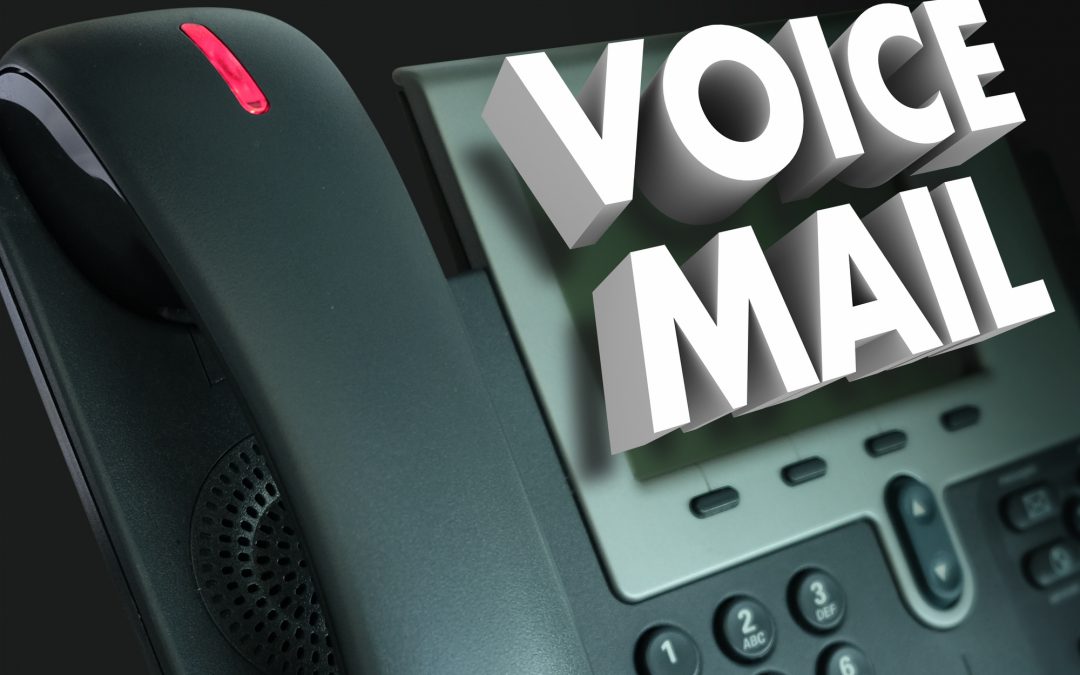By Nancy Friedman, Keynote Customer Service Expert; President, Telephone Doctor Customer Service Training
Our surveys are showing voice mail is now running far behind email to reach someone. However, since voice mail is still in use, let’s go over some of the basic guidelines of using voice mail. I often hear “no one returns my voice mails anymore” a lot. Could it be the way your message is left?
There was a time, some of us might recall, where there was NO voice mail. No automated attendant. No, “I’m not at my desk right now.” Just good, old fashioned human beings talking with each other.
Is there anyone reading this that disagrees, the first voice we hear, when we call a company sets the tone, starts the process, and is the voice that ‘welcome’s the caller’ to the company? I’ve not met anyone who disagrees with that.
Then why on earth would we put a dull, monotone, robotic voice on voice mail? Between the automated attendant that greets the public and your own voicemail that says HELLO to the person dialing in direct, why not be GREAT?
I’m going to focus on your own voice mail message today. We’ll tackle the automated attendant with another blog. My reason being, the company automate attendant is normally run by committee, or a department, etc. and is often delivered to the company preset. Whereas, in most cases, your own voice mail, be it at your desk at work, home or cell phone, is a decision YOU get to make. So why not be GREAT?
I’m betting right now, most of you have not dialed into your own voicemail to hear how your own voice sounds and your message the caller hears. That’s your first assignment from the Telephone Doctor. Dial in and hear your own voicemail message. What grade would you give yourself?
Listen to the tone of your voice. Can we hear the smile? It is upbeat and fun? Or do you sound like a robot, perhaps even down and out? I’m not gonna beat you up on this, but we all know you CAN hear a smile. And very few people want to listen (or talk with) Mr. or Mrs. ‘I sound as though I lost my best friend.’
Then there are those who record way too fast, so it’s near impossible to understand what you’re saying, where you are and when you’ll return. Be clear. And of course, the other end of the spectrum is talking way too slow. That, as well, can be a frustration.
If your voice mail message says, “I do check messages daily” then do it. We know more folks will leave a message when they feel comfortable you will hear it and take action. We aren’t able to ‘make’ people return voicemail messages, but we can make the message we leave better, stronger and more effective so it’s more appealing to return calls. And if you’re a Telephone Doctor follower, you know we recommend using the sandwich method. That’s sending an email after the voicemail (and vice versa). We never know which channel of communication a person uses first (and/or doesn’t get to the other channel of communication).
If you don’t listen to your voice mail anymore (and there are many folks, who don’t), let that be your message. “Hi, this is Nancy Friedman, please do not leave a message on this voice mail. I do not check voicemails any more. Please email me at: Nancy@telephonedoctor.com”.
And for those that do leave a message they are out of the office for a time, please do us the favor of changing it back when you return from your trip, vacation or wherever. Also, double check your EMAIL out of office message as well. Double check it’s right so we don’t hear: “I’ll be back in the office JULY 5” When it’s November. (Don’t laugh – it happens more that you know.)
Tips for better voice mail messages:
• Exercise your option. Various voice mail systems allow you to play your message back so you can rerecord it if you’re not happy or if there was an error. Take advantage of that if you have the opportunity.
• Expect to encounter voicemail. Be prepared with a great message and a super tone of voice. Keeping the message you leave UNDER 30 seconds is a big help to the listener.
• Avoid “winging” a message. Be prepared. Have an objective. Know what you’re going to say. Don’t stumble. Messages without some thought can sound amateurish.
• Avoid leaving “BAD NEWS” on voice mail. You might say. “it’s important we talk about our Thursday appointment” or something less offensive than, “I’m cancelling our Thursday appointment.” If it’s the same day and time is of the essence and you have their cell phone number, a text might be in order. But again, leaving BAD NEWS on either voicemail and/or email isn’t recommended when possible.
• Return your phone calls or have them returned on your behalf. There is little value in having voicemail if messages don’t get handled. Since part of your message normally says, “I will return all calls” then, by gosh, do it.
• Give smiles, smiles and more smiles on both your own voicemail and the one you leave someone else. It really helps.
• Remember to SANDWICH. Leave the voicemail, then hit the computer and send an email to that person on same item.

